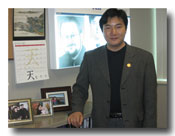Program Information
A Solution to Presenting Radiotherapy Plans in Regular PACS
Y Yan*, H Choy , S Jiang , A Pompos , K Westover , R Timmerman , The University of Texas Southwestern Medical Center, Dallas, TX
Presentations
SU-I-GPD-J-87 (Sunday, July 30, 2017) 3:00 PM - 6:00 PM Room: Exhibit Hall
Purpose: Radiation Oncologists operate within multidisciplinary teams and therefore need to share radiation therapy (RT) plans with physicians in other specialties, both as part of routine reporting at the time of treatment completion and to aid decision making in complex cases. However RT plan formats are not supported by regular PACS or Hospital Information System (HIS) in routine use. Common current modes of transferring RT plan information are through document-style reports of variable quality that are output by Treatment Planning Systems (TPS) and transferred electronically as document files or by fax. Here we report a method that utilizes standard PACS-compatible image modality to display information-rich RT plans that are widely accessible to all physicians in a viewing format they are familiar with.
Methods: RT specific expertise is needed to present RT plans in a regular PACS designed specifically to manage diagnostic imaging studies. Our solution utilizes software that parses and articulates DICOM-RT objects exported from TPSs, reproduces RT plan dose distributions and renders them to a modality, Multi-Frame True Color Secondary Capture (SC), that PACS supports. The workflow consists of three steps: 1) export DICOM-RT objects; 2) reproduce RT plan dose distributions and create SC objects; 3) assign an accession number and upload SC objects to PACS.
Results: RT plan dose distribution records are displayed in both PACS and HIS. Absolute isodose lines are clearly displayed so that anatomically accurate radiation dose values are quantitatively depicted within a system non-radiation oncologists are accustomed to using for viewing other images. Automated generation and uploading of SC objects requires 10 minutes per case.
Conclusion: This system enables more accurate disbursement of knowledge relating to previously delivered RT plans for physicians working in multidisciplinary teams. This improvement comes at minimal cost because it can be largely automated.
Contact Email:
